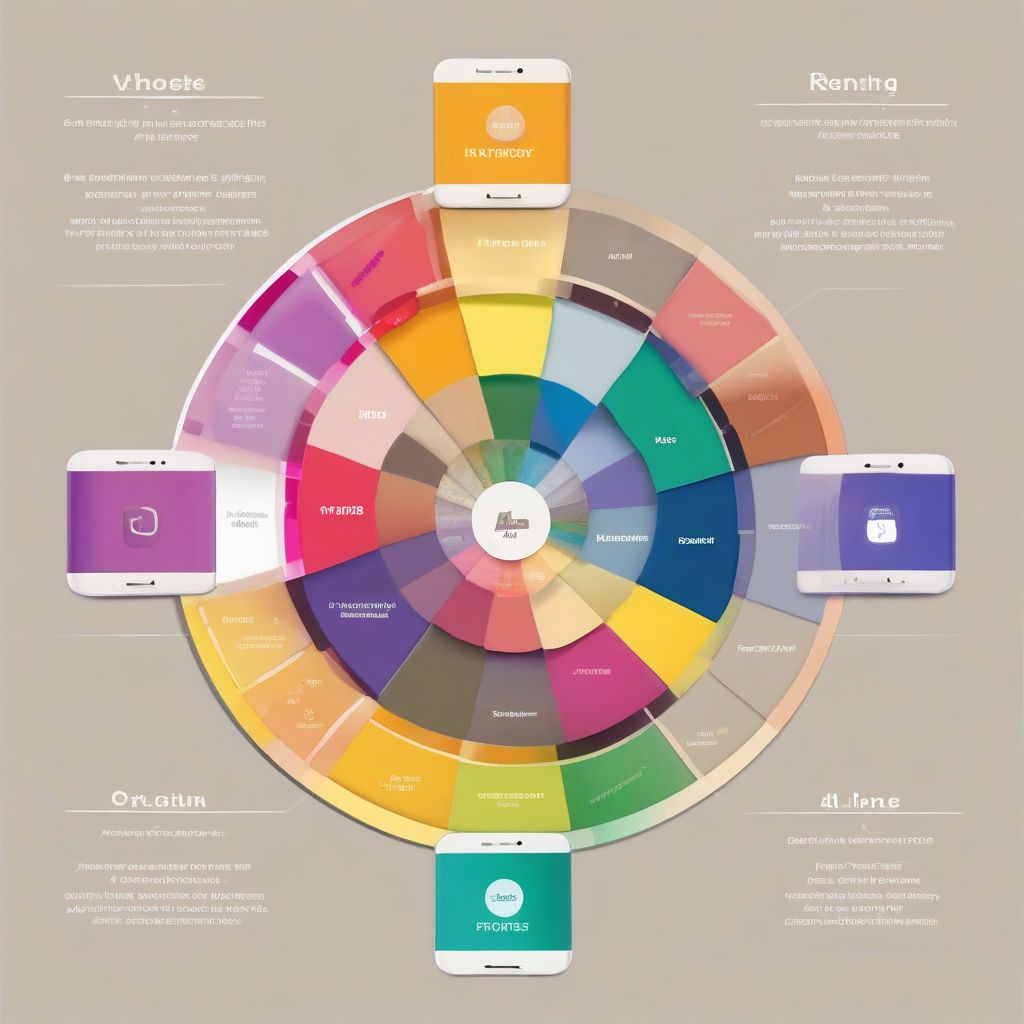Have you ever downloaded an app and instantly felt drawn to its look and feel? Chances are, it wasn’t just a coincidence. Just like a delicious meal starts with choosing the right ingredients, crafting an aesthetically pleasing and user-friendly app begins with a solid understanding of color theory.
As a nutritionist and meal planning coach, I understand the impact of a well-presented plate. Vibrant colors entice the eye and stimulate the appetite. The same principle applies to app design. Strategic use of color can transform a bland interface into an engaging experience. It can influence emotions, guide navigation, and ultimately, determine the success of your app.
Understanding the Basics: What is Color Theory?
In simple terms, color theory is a set of guidelines that explain how colors interact, complement, or clash with one another. It explores the visual impact of different color combinations and provides a framework for creating harmonious and effective designs.
Here are some key concepts:
- The Color Wheel: The foundation of color theory, the color wheel, visually represents the relationships between different colors.
- Color Harmony: This refers to pleasing and balanced color combinations that create a sense of visual order.
- Color Psychology: This fascinating field delves into how colors impact our emotions and behaviors. For example, blue evokes trust and security, while red conveys excitement or urgency.
Why is Color Theory Crucial for App Design?
Imagine scrolling through a sea of apps in the app store. What makes yours stand out? The answer lies in creating a visually appealing and engaging experience, and that’s where color theory comes in.
Here’s how color theory can elevate your app design:
1. Enhancing Brand Identity and Recognition
Think of your favorite brands. What colors come to mind? Strong brands use color consistently to create a memorable identity. By choosing colors that align with your brand’s personality and values, you can establish a visual language that resonates with your target audience.
2. Influencing User Emotions and Behavior
Colors have a powerful impact on our subconscious. Warm colors like red and orange can evoke energy and excitement, while cool colors like blue and green promote feelings of peace and trust. Understanding these psychological nuances can help you create the desired emotional response from your users.
3. Improving Readability and User Experience
Imagine trying to read light gray text on a white background—a recipe for a headache! Color contrast plays a crucial role in ensuring that your app is accessible and easy to use. By using contrasting colors for text and background, you can significantly improve readability and overall user experience.
4. Guiding User Attention and Navigation
Strategically placed pops of color can act as visual cues, guiding users through your app’s interface. Use color to highlight important buttons, call to actions, or to differentiate between sections within your app.
 Color Wheel in App Design
Color Wheel in App Design
Putting Theory into Practice: Applying Color to Your App Design
Now that we understand the “why” let’s explore the “how.” Here are practical steps to apply color theory in your app design:
1. Define Your Brand Personality and Target Audience
Just like choosing an outfit, your app’s color palette should reflect its personality.
- Is your brand playful and energetic? Consider vibrant hues like oranges and yellows.
- Are you aiming for a sense of sophistication and trust? Opt for a more muted palette with blues and grays.
Research your target audience’s preferences. Are they millennials drawn to bold and modern designs, or do they prefer a more minimalist aesthetic?
2. Choose a Primary Color and Supporting Palette
The 60-30-10 rule is a classic interior design principle that translates beautifully to app design.
- Select a dominant primary color (60%) that embodies your brand.
- Choose a secondary color (30%) that complements the primary color and adds depth.
- Finally, select an accent color (10%) to highlight important elements and create visual interest.
3. Explore Different Color Harmonies
Color harmony refers to aesthetically pleasing color combinations. Here are a few popular options:
- Complementary Colors: These are colors opposite each other on the color wheel (e.g., blue and orange). They create a vibrant and energetic feel.
- Analogous Colors: These are colors that sit next to each other on the color wheel (e.g., blue, blue-green, and green). They create a harmonious and calming effect.
- Triadic Colors: These are three colors evenly spaced on the color wheel (e.g., red, blue, and yellow). They offer a balanced and visually appealing combination.
Experiment with different harmonies to find the one that best suits your app’s style and purpose.
4. Pay Attention to Contrast and Accessibility
Ensure sufficient contrast between text, elements, and the background to enhance readability. Consider users with visual impairments and strive to adhere to accessibility guidelines.
5. Test and Iterate
Design is not a one-size-fits-all approach. Once you’ve chosen your color scheme, test it on different devices and screen sizes. Gather feedback from your target audience and be willing to make adjustments based on their responses.
Conclusion: Crafting a Colorful App Experience
Just like a well-balanced meal nourishes the body, a well-designed app, enriched with the principles of color theory, can nourish the user experience. By understanding the emotional impact of colors, their role in branding, and their ability to guide navigation, you hold the key to crafting an app that’s not only visually appealing but also highly effective.
So, embrace the world of color, experiment, and watch your app blossom into a vibrant and engaging digital experience.
What are your favorite examples of apps that use color exceptionally well? Share your thoughts in the comments below!
[amazon bestseller=”color theory”]
